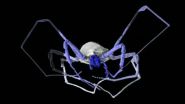(Press-News.org) Flu epidemics cause up to half a million deaths worldwide each year, and emerging strains continually threaten to spread to humans and cause even deadlier pandemics. A study published by Cell Press on April 10 in the journal Immunity reveals that a drug that inhibits a molecule called prostaglandin E2 (PGE2) increases survival rates in mice infected with a lethal dose of the H1N1 flu virus. The findings pave the way for an urgently needed therapy that is highly effective against the flu virus and potentially other viral infections.
"Drugs that specifically target PGE2 pathways have already been developed and tested in animals, so our results have excellent potential for clinical translation, not only for the treatment of influenza, but also other viral respiratory infections that interact with similar host immune pathways," says senior study author Maziar Divangahi of McGill University.
Despite the worldwide use of vaccination and other antiviral interventions, the flu virus remains a persistent threat to human health. To investigate molecular pathways that could be targeted by novel interventions, Divangahi and his team became interested in ibuprofen, which is commonly used to manage flu-like symptoms. By inhibiting a molecule called cyclooxygenase (COX), ibuprofen and other nonsteroidal anti-inflammatory drugs (NSAIDs) lower the production of prostaglandins—immune molecules that contribute to pain and fever. But COX inhibition has produced conflicting effects on immune responses and survival rates in animals infected with the flu virus, highlighting the importance of clarifying the role of prostaglandins in antiviral immunity.
In the new study, Divangahi and his team found that mice genetically engineered to lack PGE2 showed enhanced immune responses, lower viral levels in the lungs, and better survival rates following infection with a lethal dose of the H1N1 flu virus compared with infected mice that were not genetically modified. Similarly, mice treated with a compound that inhibits PGE2 showed enhanced antiviral immunity and survival rates following infection with a lethal dose of the flu virus compared with untreated mice.
"We believe that previous studies produced conflicting results because COX inhibition affects all prostaglandins, not just PGE2," Divangahi says. "Our findings suggest that different prostaglandins have different roles in antiviral immunity and that specific inhibition of PGE2 will be much more effective than NSAIDs at protecting against influenza infection."
INFORMATION:
Immunity, Coulombe et al.: "Targeted Prostaglandin E2 Inhibition Enhances Anti-Viral Immunity through Induction of Type I Interferon and Apoptosis in Macrophages."
Researchers find that influenza has an Achilles' heel
2014-04-10
ELSE PRESS RELEASES FROM THIS DATE:
Team solves decades-old mystery of how cells keep from bursting
2014-04-10
LA JOLLA, CA—April 10, 2014—A team led by scientists at The Scripps Research Institute (TSRI) has identified a long-sought protein that facilitates one of the most basic functions of cells: regulating their volume to keep from swelling excessively.
The identification of the protein, dubbed SWELL1, solves a decades-long mystery of cell biology and points to further discoveries about its roles in health and disease—including a serious immune deficiency that appears to result from its improper function.
"Knowing the identity of this protein and its gene opens up a broad ...
Lactate metabolism target halts growth in lung cancer model
2014-04-10
BOSTON – Cancer cells generate energy differently than normal cells, a characteristic that helps them to survive and metastasize. A major goal in the field of cancer metabolism is to find ways to overcome this survival advantage.
Now a research team led by investigators in the Cancer Center at Beth Israel Deaconess Medical Center (BIDMC) has found that targeting the enzyme responsible for the final step of glucose metabolism not only halts tumor growth in non-small-cell lung cancer, but actually leads to the regression of established tumors.
Importantly, the new findings, ...
Getting to the root of Parkinson's disease
2014-04-10
Working with human neurons and fruit flies, researchers at Johns Hopkins have identified and then shut down a biological process that appears to trigger a particular form of Parkinson's disease present in a large number of patients. A report on the study, in the April 10 issue of the journal Cell, could lead to new treatments for this disorder.
"Drugs such as L-dopa can, for a time, manage symptoms of Parkinson's disease, but as the disease worsens, tremors give way to immobility and, in some cases, to dementia. Even with good treatment, the disease marches on," says ...
Too much protein may kill brain cells as Parkinson's progresses
2014-04-10
Scientists may have discovered how the most common genetic cause of Parkinson's disease destroys brain cells and devastates many patients worldwide. The study was partially funded by the National Institutes of Health's National Institute of Neurological Disorders and Stroke (NINDS); the results may help scientists develop new therapies.
"This may be a major discovery for Parkinson's disease patients," said Ted Dawson, M.D., Ph.D., director of the Johns Hopkins University (JHU) Morris K. Udall Center of Excellence for Parkinson's Disease, Baltimore, MD. Dr. Dawson and ...
Researchers determine how mechanical forces affect T-cell recognition and signaling
2014-04-10
T-cells are the body's sentinels, patrolling every corner of the body in search of foreign threats such as bacteria and viruses. Receptor molecules on the T-cells identify invaders by recognizing their specific antigens, helping the T-cells discriminate attackers from the body's own cells. When they recognize a threat, the T-cells signal other parts of the immune system to confront the invader.
These T-cells use a complex process to recognize the foreign pathogens and diseased cells. In a paper published this week in the journal Cell, researchers add a new level of understanding ...
Researchers identify transcription factors distinguishing glioblastoma stem cells
2014-04-10
The activity of four transcription factors – proteins that regulate the expression of other genes – appears to distinguish the small proportion of glioblastoma cells responsible for the aggressiveness and treatment resistance of the deadly brain tumor. The findings by a team of Massachusetts General Hospital (MGH) investigators, which will be published in the April 24 issue of Cell and are receiving advance online release, support the importance of epigenetics – processes controlling whether or not genes are expressed – in cancer pathology and identify molecular circuits ...
Yale researchers search for earliest roots of psychiatric disorders
2014-04-10
Newborns whose mothers were exposed during pregnancy to any one of a variety of environmental stressors — such as trauma, illness, and alcohol or drug abuse — become susceptible to various psychiatric disorders that frequently arise later in life. However, it has been unclear how these stressors affect the cells of the developing brain prenatally and give rise to conditions such as schizophrenia, post-traumatic stress disorder, and some forms of autism and bipolar disorders.
Now, Yale University researchers have identified a single molecular mechanism in the developing ...
Some birds come first -- a new approach to species conservation
2014-04-10
New Haven, Conn.— A Yale-led research team has developed a new approach to species conservation that prioritizes genetic and geographic rarity and applied it to all 9,993 known bird species.
"To date, conservation has emphasized the number of species, treating all species as equal," said Walter Jetz, the Yale evolutionary biologist who is lead author of a paper published April 10 in Current Biology. "But not all species are equal in their genetic or geographic rarity. We provide a framework for how such species information could be used for prioritizing conservation."
Worldwide, ...
Penn study finds mechanism that regulates lung function in disease Birt-Hogg-Dube syndrome
2014-04-10
(PHILADELPHIA) – Researchers at Penn Medicine have discovered that the tumor suppressor gene folliculin (FLCN) is essential to normal lung function in patients with the rare disease Birt-Hogg-Dube (BHD) syndrome, a genetic disorder that affects the lungs, skin and kidneys. Folliculin's absence or mutated state has a cascading effect that leads to deteriorated lung integrity and an impairment of lung function, as reported in their findings in the current issue of Cell Reports.
"We discovered that without normal FLCN the alveolar epithelial cells (AEC) in these patients' ...
Ancient 'spider' images reveal eye-opening secrets
2014-04-10
VIDEO:
This is a video showing the 305-million-year-old harvestman fossil.
Click here for more information.
Stunning images of a 305-million-year-old harvestman fossil reveal ancestors of the modern-day arachnids had two sets of eyes rather than one.
The researchers say their findings, published in the journal Current Biology, add significant detail to the evolutionary story of this diverse and highly successful group of arthropods, which are found on every continent except Antarctica.
University ...


